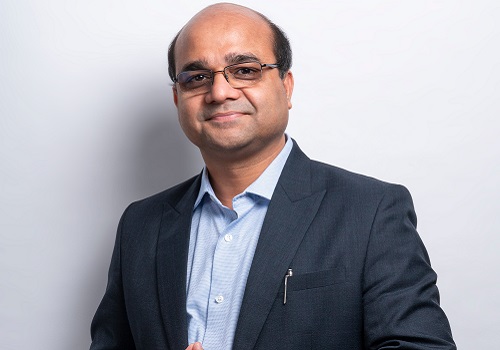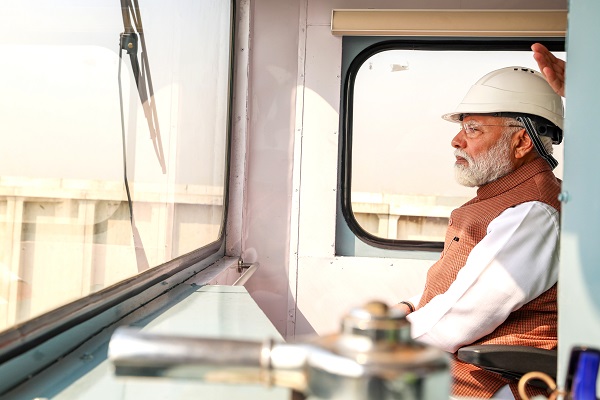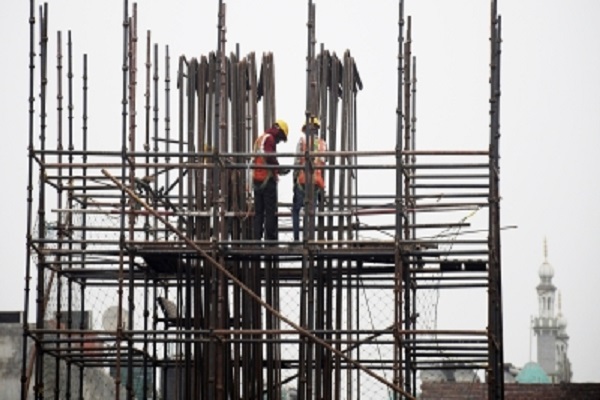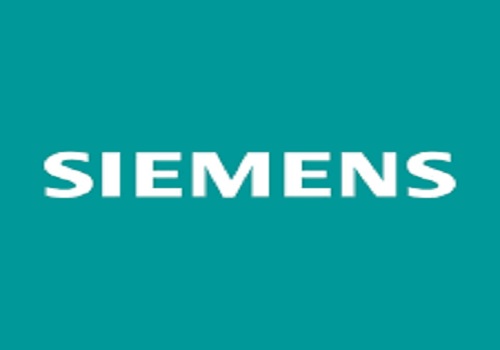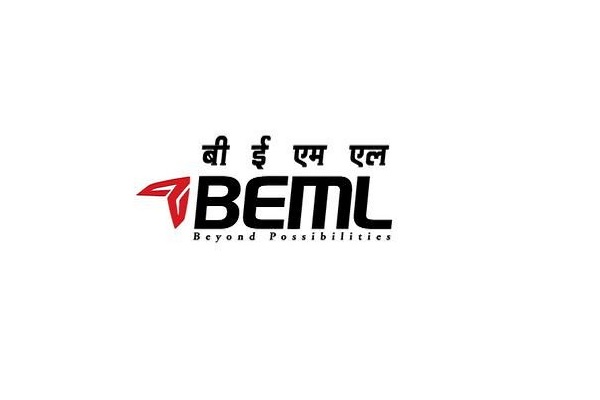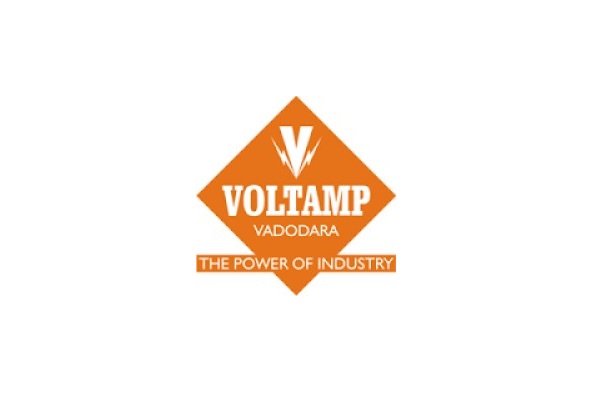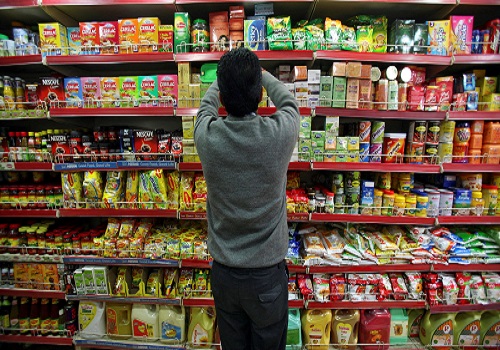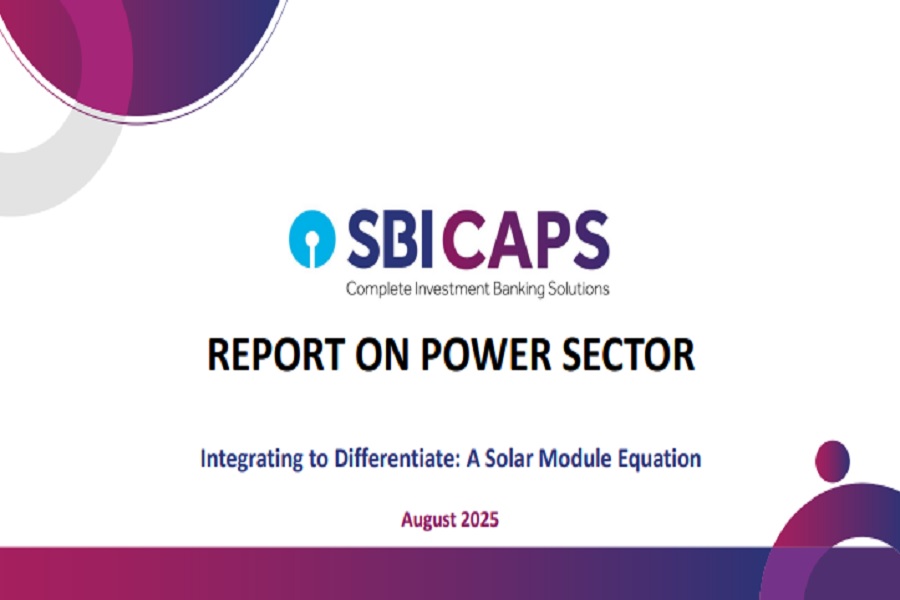Capital Goods Sector Update : KIE India Manufacturing Forum 2025 takeaways by Kotak Institutional Equities
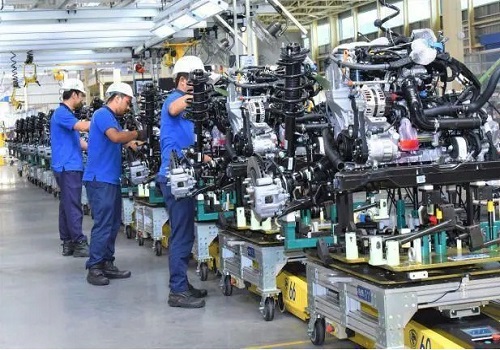
The 2025 edition of our annual manufacturing forum was held on August 22. The conference attracted participation from 10 corporates and 73 clients. Over the course of the day, 26 one-on-one meetings and 22 group meetings happened between clients and company representatives. The discussions happened across select sectors—Industrials, Defense, Renewables and EMS.
APL Apollo Tubes Limited
APL Apollo is India’s leading branded structural steel tube manufacturer, headquartered in Delhi NCR. The company operates 11 manufacturing facilities, with a total installed capacity of 4.5 mn tons, which is planned to expand to 6.8 mn tons by FY2028. It offers over 3,000 product variants for applications in urban infrastructure, real estate, commercial construction, agriculture and engineering.
* Adding 2.7 mn tons of capacity, including 1.7 mn tons in new markets. The company is adding 700k tons of capacity in the Dubai plant and 500k tons of capacity in East India (Gorakhpur and Kolkata). It is serving the world market from its Dubai plant and presently has a very small market share in the same. Even in the East India market for steel tubes, it has a small market share, as it was not optimal to serve this market from the company’s current Raipur plant. The company is also investing in a 500k ton capacity for roofing sheets (5 mn ton market size). This above aggregates to 1.7 mn tons capacity, which would not cannibalize its existing markets. Additionally, it is investing in another 1 mn ton capacity split equally into two of its existing and high-growth segments in the coast guard and light structural segments. All the above projects would require ~Rs15 bn of capex.
* Dubai plant’s fast delivery—a clear advantage for local demand. While the company is a dominant market leader in India (65%+ market share), it has only recently started its overseas foray. The high cost of steel in India was a large 5% cost disability, preventing the company from covering the overseas market from its Indian manufacturing plants. Its existing capacity in Dubai has quickly reached 80% utilization based on its faster delivery proposition and the same yielding significant working capital benefits for its customers within Dubai (accounting for half of its throughput).
* Uptick in pricing in general category products reflects strength of positioning and strategic oversight. The company was earlier operating at ~Rs1,700 per ton EBITDA within the category, which it has now taken up to ~Rs2,700 per ton EBITDA after the price hike. The same represents a ~4% pricing premium versus peers against a 2% pricing premium earlier. At the 2% pricing premium, peers were earning Rs1,000 per ton lesser EBITDA and thus, the key imponderables for APL Apollo for considering taking the price hike twofold—(1) no loss of market share and (2) limiting the scope of peers to make enough EBITDA to invest beyond the general structural category. Note that the company has a lower 30% market share in the general structural category versus the higher 65%+ overall market share. The general structural portfolio has a 35% salience within APL Apollo’s portfolio versus a 2X salience in the portfolio of its peers. What gave it confidence to take the price increase was (1) its interaction with its key dealers and fabricators and (2) its strategic step of coming up with an economy brand, promising its dealers a lower price point than peers once beyond them, crossing their current offtake from APL Apollo.
* Strong returns in existing investment, incentivizing aggression in capacity expansion. Against the Rs8,000 per ton of capex, the company is earning Rs65k per ton of revenue and >Rs4,600 per ton EBITDA and >Rs4,000 per ton EBIT. Assuming a Rs1,200 per ton working capital at 10 days of sales working capital, would still yield a Rs9,200 per ton of invested capital and thus, a high return on invested capital. This is what is driving the aggression in capacity expansion for the company. Being invested ahead of throughput does add ~Rs400 per ton to employee costs, which the company is fine having an add-on cost overhead, given its high returns. Of its cash accruals, 25% goes in tax, a similar amount in capex, a similar amount in dividends and the remaining boosts its cash position every year.
Azad Engineering
Azad Engineering is a prominent manufacturer specializing in precision engineering solutions for aerospace & defense, power generation and oil & gas OEMs. Over the past decade, Azad has been able to establish state-of-the-art facilities and develop deep process engineering capabilities, which have allowed it to be qualified for more than 1,500 unique parts for global OEMS. The company supplies to highly regulated industries, with large TAM and significant entry barriers, leading to very high growth (~4X in 5 years). Additionally, Azad has a large order book of Rs60 bn (~12X TTM sales), offering visibility for continued high growth over the long term.
Key takeaways from interaction with management
* Guidance: The company has reiterated its guidance of 25-30% for the year. Since many facilities will be commissioned this year with a ramp-up over FY2027, Azad Engineering expects its FY2027 topline growth to be much higher than the 25-30% it will see this year. On profitability, the company remains confident of achieving 32-36% EBITDA margins in the long run.
* Impact of US tariffs: The company has historically won large orders, competing against China, Europe, Japan and others. Azad Engineering’s closest competitor is China, but China is also facing significant US tariffs of 30%, while tariffs are lower on Japan and Europe—the cost of manufacturing is so high in the said geographies that, even with the tariff differential, they are more expensive than the company. Hence, the company remains confident that it will continue to attract more orders, going forth, as even with tariffs, it is the cheapest supplier.
* Order book: Azad has a strong order book position worth Rs60 bn (~12X TTM sales), which will enable it to continue its growth trajectory. The energy sector is the largest part of the order book of approx. US$400 mn (Rs34 bn), followed by aerospace and defense with US$200 mn (Rs17 bn) and oil & gas accounts for the rest of the US$100 mn (Rs9.5 bn).
* Capacity expansion: To cater to the robust demand, Azad Engineering will be setting up eight lean manufacturing facilities, including one state-of-the-art forging plant in Hyderabad. Of the eight facilities, two have already been inaugurated in March and April 2025. The said facilities will be dedicated to manufacturing GE and MHI each. Of this, the GE facilities have already started production, while the Mitsubishi plant will start production soon. All eight facilities will be commissioned, most likely in the next 12-18 months. During FY2026, the company will incur a capex of Rs4.5 bn, of which Rs3 bn is for capacity expansion. It expects that at peak utilization this can add Rs5.5 bn in revenues (1.8X asset turn).
* Strong entry barriers: Azad Engineering believes its business has significant entry barriers arising from (1) capital intensity (significant upfront cost), (2) technical expertise and precision (some parts need zero defects per million) and (3) a rigorous and lengthy qualification process (30-48 months). Driven by this, the company faces limited competition in its key segments, primarily from suppliers in China, Europe, Japan and the US.
* Expansion into engine manufacturing: Azad Engineering has tied up with DRDO to manufacture fully integrated engines, which can potentially be used in several defense applications such as UAVs. As part of the program, the company is expected to deliver two engines by FY2026; if successful, this can open significant opportunities to participate in India defense manufacturing.
* Growth levers: The company has multiple growth levers, which will play out in the long run, namely (1) increasing its wallet share (Azad Engineering only has 1.5-2.0% wallet share in most components), (2) getting qualified for more products in existing areas of operations and (3) entering into new components.
* Asset turns to improve and working capital to stabilize: On a steady state basis, the company expects to operate at a blended asset turn of 1.75-2X, of which the energy segment will operate at 1.5-2X, while the aerospace and O&G segments are at 2-2.5X, a significant improvement from the current 1.3X asset turn. On working capital, Azad Engineering expects an improvement from 250 days to 140- 150 days in a couple of years.
INOX India
Inox India is a prominent manufacturer of cryogenic equipment and is one of the leading cryogenic tank manufacturers in the world. The company has a legacy of 30+ years, with deep expertise in design, engineering, manufacturing and installation of equipment for cryogenic conditions. The company has built a strong suite of products across cryogenic storage tanks, ranging from ship fuel storage tanks and mini-terminals at ports to fuel dispensation solutions and the recently introduced stainless steel kegs. Key growth drivers include the LNG segment, driven by the shift to LNG trucks, the widening use of industrial gas and entry into the stainless steel kegs market
Key takeaways from interaction with management
* Market leadership: Inox is the market leader in cryogenic tank manufacturing, with a 60%+ market domestic share; it is also gaining share in international markets. The second-largest player in the domestic market only has ~25% of revenues of Inox.
* Strong entry barriers: Cryogenic storage tanks are a very critical part and can attract significant risks in times of malfunctioning. Thus, stringent regulations are required for the design, manufacture and operation of this equipment. The regulations differ based on the applications of these tanks and area of usage. Existing players have deep relationships and dealt with regulators, but it is very difficult for a new entrant to establish trust with clients of an inherently critical yet hazardous industry.
* Industrial gas business remains strong: During the quarter, the company dispatched India’s first ultrahigh purity ammonia ISO containers; Inox is the only one to build it in India and expects a healthy demand for specialized tanks in India and abroad. Additionally, the company also won orders for disposable cylinders from US customers, despite the imposition of tariffs indicating its strong value proposition to clients.
* LNG business scaling up: Inox has successfully streamlined LNG fuel tank production, enabling it to supply 145 tanks to OEMs during the quarter. On account of strong customer demand, the company is building capabilities, which are nearly 10 times over the course of the next few years, to cater to the requirements of OEMs and fleet operators. It also sees regulatory support coming in for the adoption of LNG tanks.
* LNG truck storage tank—a Rs50-60 bn opportunity: An LNG storage tank accounts for Rs 1 mn of the total cost of a truck (Rs 0.5 mn/tank). This equates to a Rs50-60 bn opportunity, assuming annual sales in the range of 50-60k. Additionally, the company has the capability in the end-to-end setup for LNG and LCNG stations, a potential market size of close to Rs50 bn over the next 3-5 years. Inox is very confident of capturing a large share of this opportunity on account of their deep capabilities in the space and tie-ups with leading players such as Adani.
* Cryo Scientific division: The company has successfully completed VVTS, based on which it has received a new order of Rs1.45 bn. For the said order, nearly 90% of the fabrication and assembly in Inox’s facility will ensure greater control over quality and timeline. The project will be completed over the course of two years, reflecting a strong relationship and visibility in the international scientific project pipeline.
* Entry into the beer keg business: The company has built a 1 mn p.a. keg facility in Savli; the current production capacity is at 300,000 units. It is a state-of-the-art facility, as keg manufacturing requires a very high level of cleanliness. Globally, the market size of kegs is 4-5 mn kegs a year, amounting to a Rs15-20 bn market. Inox is seeing a renewed interest from global giants such as AB InBev, Heineken and a couple of companies in Brazil. Additionally, it has received global approval from Heineken and is now expanding its distribution network globally to tap the opportunity. At the current scale of 300k units, it has the potential to generate revenue of Rs1.5-2 bn at peak utilization.
Kirloskar Brothers Limited
Kirloskar Brothers Limited is India’s first and largest pump manufacturer. It operates across 6 continents and 120+ countries, with 10 domestic and 7 international manufacturing facilities. It serves diverse sectors, including water, power, oil & gas, irrigation and nuclear energy. It had FY2025 revenues of ~Rs45 bn, active customer base of over 2,500 and a product portfolio of 250+ SKUs
* Weakness in 1Q driven by transient factors; 2Q to see return of growth momentum. The recent quarterly performance (revenues down 5% yoy) was impacted by adverse seasonal trends (early onset of monsoon impacting demand for small pumps) and geopolitical factors (elections in the US and Thailand). The company views the same as a short-term disruption and has shared that the underlying demand remains strong. It expects momentum to improve from 2Q.
* EBITDA margin improvement driven by multiple factors. The 70 bps yoy improvement in margin to 13% was driven by (1) softening of raw material prices and (2) KBL’s strategic focus on operational excellence. On the latter, the company shared progress made in optimizing cost, streamlining processes and improving resource utilization across all business verticals.
* Retail petroleum applications opens up a large market. The submersible turbine pumps for the petrol pumps launched recently do have the requisite approvals for participating in domestic and overseas supply. This positions the company as a challenger in a global market dominated by two international players (dominant aggregate share).
* De-industrialization of the UK because of policies a concern. With the move toward net zero, power prices have gone up 3X in the UK. This is making operations in select sectors (steel plants, chemical plants) very difficult and leading to the closure of some of the related plants. On a related note, the North Sea operations for offshore platforms business of many UK companies are also witnessing indecision linked to the operations of rigs. KBL envisages reduced spending on its existing framework contracts and has added new contracts in power stations and other areas.
* Nuclear power opportunity in UK appears encouraging. KBL is approved by Great Britain Nuclear (requires 60-70% content for the SMR program) and is being approved by some of large manufacturers of SMR in the UK. SPP Pumps is well positioned as Britain’s largest pump manufacturer, and thus has a good reference base in power plants. KBL, the parent company of SPP, also has a good reference base in nuclear power plants.
* Well-placed in domestic nuclear power opportunity. The company has received a development order for the primary heat transport program. KBL is working with NPCIL for some other pumps - two-tothree of these are self-funded by the company to ensure that it gets orders if and when such pumps get required. For other pumps (heavy water, fast breeder, KBL has all the approvals required to participate in the program. It has also developed the boiler feed pump and delivered the orders to Rajasthan Atomic Power Station. These were the first Indian designed and manufactured boiler feed pumps for the Indian nuclear program.
* The US business unlikely to be impacted by tariffs on India supply. The offering is large package solutions, including the entire pump house. Pumps sourced from India form a modest 7-8% of the overall cost and most of the remaining components are sourced from within the US.
MTAR Technologies Ltd
MTAR Technologies is a Hyderabad-based precision engineering company, specializing in critical and differentiated engineered products for sectors such as clean energy, civil nuclear power, aerospace and defense, and fuel cells.
Key takeaways
* Execution to pick-up in second half: The company expects strong performance in 2HFY26, driven by operating leverage and scale of production for new products developed in the clean energy and aerospace sectors over the past few years.
* Impact of US tariff: Although tariff-related uncertainties continue to surround the company’s US export business, MTAR remains confident of sustaining the export momentum. This is driven by its cost competitiveness and engineering depth achieved through the indigenization of key components, especially in all sectors where it exports to the US market.
* Diversified export base: Although MTAR generates 80% of revenue from exports, it is well-diversified across countries, with a strong presence in Europe and Israel.
* Clean energy: The segment delivered Rs1.05 bn in revenue from the segment this quarter; additionally, the company has undertaken the development of new products for Bloom Energy, further expanding wallet share in the sector. Driven by rising spend in data centers and a strong outlook for Bloom, MTAR expects a growth of 15-20% in FY2026 in the clean energy sector, including fuel cells, hydropower, battery storage systems and others. The company expects the revenue run rate from Bloom to increase from Rs1 bn/qtr to Rs1.4-1.5 bn/qtr.
* Aerospace and defense: The company continues to see strong traction and delivered Rs250 mn of revenue in the vertical for 1QFY26. MTAR is also strengthening its defense portfolio and is currently participating in the tendering process for various programs for the Government of India. It is actively focused on expanding wallet share with existing European customers in the segment and expects revenue growth of 80% in FY2026.
* Nuclear: It expects exponential growth in the segment, driven by a robust pipeline and rising participation in high-value strategic programs. During the quarter, the company generated Rs54 mn of revenue. The company also submitted quotes for upcoming projects for Kaiga 5 and 6, and refurbishment reactors for Madhya Pradesh, Rajasthan and Chennai projects. During the current fiscal, MTAR expects orders worth Rs10 bn over the next 3 to 6 months, and anticipates delivering orders worth Rs600 mn in the sector in FY2026. Furthermore, management expects the segment to grow exponentially FY2027 onward, based on the kind of orders expected in FY2026.
* Oil & gas business: The company has signed a long-term contract with Weatherford. Management expects this to be a full-fledged program for the next 10 years. As of date, MTAR has almost completed the various assemblies in prototypes. The company expects to scale up the business in the initial couple of years, but at the steady state, this business will contribute US$10 mn to the business annually.
* Products and others: MTAR generated revenue of Rs210 in 1QFY26 from the segment and expects a 20% growth in the vertical for FY2026.
Paras Defence & Space Technologies
Paras Defence & Space Technologies offers a wide range of products and solutions for defense and space applications. With a focus on the defense and space sectors, Paras has two main verticals, namely Optics & Optronic Systems and Defence Engineering (comprising Defence Electronics, EMP Protection Solutions and Heavy Engineering). With over 40+ years of sustained business growth in the area of defense and space engineering, Paras is involved in technology for rockets and missiles, space and space research, naval systems, land and armored vehicles, electronic warfare and surveillance, and electromagnetic shielding to name a few. Along with this, through its subsidiaries, Paras is involved in technologies such as drones, RF and microwave, anti-drone systems, EO/IR systems for avionic platforms, and quantum communication, among others.
Key takeaways
* Optics and optronics systems: Paras started with optical components and today it is the only company in India manufacturing optical components for space. It has three main focus areas for the optics and optronics segment, i.e., (1) submarine periscopes, (2) hyper spectral imaging systems for space, (3) red dot reflex sights (India’s leading point and shoot device, for which it has got a Rs3 bn+ order from L&T) and 4) electro-optical/infra-red (EO/IR) systems.
* Submarine periscope: Paras delivered four periscopes in FY2025 and expects to deliver five periscopes in FY2026. The company expects to receive two periscope orders in the next couple of months, followed by 4/6 more orders by end-FY2026. Additionally, with Paras’ increasing scope and the complexity of its periscopes, its contribution per periscope has significantly increased from Rs30- 50 mn for a Rs250 mn periscope to nearly Rs300-500 mn per periscope. The company is also looking at tapping the export market for its periscopes since the total cost of Paras’ periscopes is significantly lower than its international peers.
* Defense engineering: The defense engineering vertical for Paras contains three main focus areas— (1) defense electronics, (2) EMP protection solutions and (3) heavy engineering. With defense engineering, one of the areas of growth is Saras aircraft, which are manufactured by Hindustan Aeronautics, to which Paras supplies an avionic suite of products. India is expected to manufacture 133 (3+15+115) aircraft and Paras’ contribution is ~Rs200 mn per aircraft. The second focus area is electronic magnetic pulse protection solutions, where Paras is the only company in the space and has an order funnel of Rs 3.5 bn currently.
* Anti-drone systems: Through its subsidiary Paras Anti-Drone Systems, it is looking to gain a foothold in anti-drone systems, with the aim of being a leader by 2026-27. Paras spends Rs30-40 mn every year on the R&D team, comprising engineers and professionals with PhDs. The focus area is to build cutting-edge technology, including radars, software-defined radios, phased arrays and advanced antennas. The company has already seen significant traction for its laser-guided anti-drone system, which it believes will be widely adopted, going forward. Paras recently received a Rs1.25 bn laserguided anti-drone order, indicating its strength in this emerging space.
* Large opportunity funnel: The company expects a massive opportunity across the four segments in FY2026—laser systems: Rs10 bn, optical telescopes: Rs10 bn, existing business: Rs4 bn and optical systems: Rs5 bn. Over a 1- to 5-year timeframe, the company expects a total opportunity funnel worth Rs140 bn spread across optical and defense engineering.
* Guidance and growth outlook: Paras aims to achieve revenue growth of 40-50% over the medium term and slightly better profitability compared with previous years. It has maintained that it aims to have an order book of ~2X revenues. Among newer areas of growth, anti-drone systems, additional wallet share in the space segment and quantum technologies will be the key focus areas for Paras. In the longer term, it expects the revenue mix to be equally split between optics and defense engineering.
PG Electroplast Ltd
PG Electroplast is a leading diversified EMS player in India, with nearly five decades of experience. The company offers comprehensive ODM and OEM solutions to 70+ premier Indian and global brands across the consumer electronics, consumer durables, automotive and sanitaryware industries. PG Electroplast has 11 manufacturing units across Greater Noida, Ahmednagar, Bhiwadi and Roorkee.
Key takeaways
* Guidance
* Revenue: Management has reiterated its recently reduced guidance of Rs57-58 bn for the core business and Rs8.5 bn from the JV (Goodworth Electronics). At a group level, this translates to Rs65-66 bn of revenues (~10% drop from earlier guidance of Rs72 bn). The reduction in guidance is due to a very weak summer season, when the RAC industry demand declined by 25-30% yoy. However, going forth, the company remains extremely confident of achieving Rs100 bn of revenue by FY2028, backed by (1) a scale-up of RAC volumes, (2) the backward integration into compressors, BLDC motors and others, (3) the expansion of the washing machine business and (4) the entry into refrigerator manufacturing.
* Profitability: Due to a weaker-than-expected topline, coupled with negative operating leverage, PG Electroplast has revised its guidance of net profit downward to Rs3.0-3.1 bn from Rs4.1 bn.
* Backward integration: The company has tied up with a leading Chinese compressor manufacturer, but the same has seen a delay since the partner is yet to receive approval from the Chinese government. Despite the delay, PG Electroplast has continued to work on building up the facility, with an initial production capacity of 5 mn, expandable to 10 mn. However, it might see some delay in production commencement of December 2025 that it was targeting earlier.
* RAC business remained resilient, despite the weak summer season: 1QFY26 was a very challenging start to the year for the RAC business, as the summer season was impacted by the early monsoon. The industry declined nearly 25% yoy for the quarter, despite the company’s RAC segment growing 15% yoy. However, the RAC supply chain has significant inventory both in channels and with brands, which will take at least 3-4 months to normalize, likely impacting 2Q/3QFY26 demand severely. Due to a potential GST cut from 28% to 18%, the company expects a significant jump after Diwali, which might help clear inventory before December, and probably help it regain lost momentum in 4QFY26.
* Electronics business: While the revenue contribution of the segment is low, it is a focus area for the company. Within the segment, the company manufactures all controllers and motherboards for TVs in-house. To boost growth, it has also started offering services to outside market as well. Additionally, PG Electroplast has started offering certain other products in the electronics segment such as security cameras and some sound boxes, where it sees good traction. Management expects this segment to become sizable for the company in the medium term.
* Cost leadership: PG Electroplast is focused on controlling opex and capex costs. 80-85% of the revenue is driven by the bill of materials, where the cost savings are generally shared with brands. The company is focused on opex cost control, driven by (1) the management of the third-party workforce during peak and non-peak seasons, (2) the reduction of fixed overheads and (3) lowering power costs. On the capex front, having single large facilities that provide economies of scale help the company differentiate itself versus peers. Overall, the company continues to see contract manufacturers with economies of scale and manufacturing of other products and components during the offseason have a lower cost structure and better return profile on manufacturing versus brands.
* Products business: The products business comprises RACs (IDU, ODU and WU), washing machines (SATL, FATL) and air coolers (window, desert and personal). For 1QFY26, despite a weak summer season, the products business contributed 77% of the total revenue, with the AC business growing 15% to Rs10.1 bn, while the washing machine business grew 36% to Rs1.26 bn. Management believes that due to a strong order book, the products business can grow 17-20% for the year, reaching a topline of Rs41-43 bn for FY2026.
* Capacity expansion: PG Electroplast will be spending Rs7.0-7.5 bn to build out new projects such as (1) the refrigerator campus in South India, (2) the campus in Greater Noida for washing machines, (3) the campus in West India with expanded AC capacity in Supa and (4) the facility for plastic components and coolers in Rajasthan.
* Entry into refrigerator: The company will be entering refrigerator manufacturing in FY2026 and will likely see revenue from FY2027. By FY2028, management expects refrigerators to be a sizable portion of the products business.
ReNew Energy Global plc
ReNew Energy Global plc is a leading integrated renewable energy player whose business offerings encompass utility-scale wind and solar, hydropower projects, energy markets, digitalization, solar manufacturing, energy storage, and emerging areas such as green hydrogen and carbon markets. ReNew currently has an operational IPP capacity of 11.1 GW (5 GW—wind, 6.1 GW—solar, 150 MWh—BESS) and manufacturing of 6.4 GW modules and 2.5 GW cells. The company has plans to increase its operational IPP capacity to 18.2 GW (+1.1 Gwh—BESS) and increase its manufacturing capacity to 6.4 GW cells (4 GW cells under construction) and 6.4 GW modules.
Key takeaways
* Management highlighted that it has commissioned 2.2 GW of renewable capacity over the past 12 months. The current operational capacity stands at 11.1 GW (5 GW—wind, 6.1 GW—solar, 150 MWh— BESS). The total committed portfolio is 18.2 GW (+1.1 Gwh—BESS) and the company is on track to construction of 1.6-2.4 GWs by end-FY2026.
* On the cell and module manufacturing, management indicated that 6.4 GW module line and 2.5 GW cell is producing 10MW/day and 5MW/day, respectively. 900+ MW Modules and 400+ MW cells were produced in 1QFY26. All cells currently manufactured are being sold externally, as DCR cells or DCR modules with ALMM modules are being used for internal consumption.
* Margins for ALMM modules are around 15% with DCR modules sold externally, enjoying 40%+ margins. The current 4 GW cell plant expansion is being undertaken in Dholera and should be ready by the end of the next financial year. The company believes utilities are the key in setting up cell plants and availability of machinery from the ASEAN region would help reduce costs, but getting utilities in place remains the key.
* On solar curtailment, management believes the maximum impact is felt by merchant solar power plants and the company believes, given its experience in FDRE and RTC projects, there would be no major impact on its operations. The company is targeting 16-20% IRRs for its solar operations, with a plan for vanilla solar having lower IRR, C&I projects in the middle and FDRE/RTC projects having the highest IRRs.
* Transmission bottlenecks, weak power demand, existing capacity yet to have its PPA signed, introduction of ALCM and storage norms are some of the primary reasons why solar tendering has been muted over the past couple of months. However, with the pick-up of power demand, the company expects this to lead to a pick-up in new project awarding activity.
* In terms of its guidance, ReNew has reiterated its EBITDA margin guidance of Rs87-93 bn and adjusted EBITDA with commissioning of 1.6-2.4 GW of capacity.
Transformers and Rectifiers (India) Limited
Transformers and Rectifiers (India) Limited (TARIL), headquartered in Ahmedabad, is one of India’s leading transformer manufacturers. It is the second-largest transformer manufacturing company by capacity in India, with an installed capacity of ~40,000 MVA across three plants.
Key takeaways
* Large ordering pipeline: TRIL highlighted a large Rs180 bn ordering pipeline for its products, with a dominant share in the 220 kV and higher voltage category. It has an order backlog of Rs52 bn and endeavors to end-FY2026, with an order backlog of Rs80 bn.
* Build-up of capacity in FY2026 to be followed by a pause. The company has a 40k MVA capacity, against which it did 29k MVA throughput last year. It aims to operate at 85% utilization (peak) this year and is adding ~37k MVA of capacity by 1QFY27. It then expects to take a pause in capacity addition and then reassess the need to invest in capacities in FY2028-29. Its preference would be to focus on domestic orders and maintain the 10-15% share of exports.
* Expectation of a 30% increase in capacity for transformers based on announced plans. TRIL shared the addition of 120k MVA of capacity for transformers based on announced plans of itself and peers, of which ~40k MVA would happen in the high and extra-high voltage categories, where the requirement for capacity expansion is the most. It shared the constraints in getting approval from the government for setting up new capacities as a constraint on the pace of investments in the extra-high voltage categories. Other constraints include trained manpower (design, winding) and high lead times for select equipment (winding). It anticipates the supply of transformers to be in deficit of demand for the next three years. On the transformer opportunity for HVDC projects, TRIL expects itself, BHEL and GE to be the key beneficiaries.
* Reducing working capital requirement. The company has reduced its working capital requirements by 20 days to 120 days over the past one year and aims to further bring down the same by another 10-20 days. It shared timely payments being made by customers and instances of advances being paid without bank guarantees from Indian customers, unlike from overseas contractors.
* Low payback period for its capex. At current margins and reasonable capacity utilization levels, the company expects to have a payback period for its capex of 2.5 years versus a higher payback period of four years for its peers.
* Pricing levers fairly well played out; cost efficiencies and operating leverage to drive margins. TRIL expects pricing of transformers to stabilize at current levels. It shared the risk of Chinese and South Korean players entering the Indian market at higher price points. It, however, expects the margin expansion to happen due to backward integration and higher operating leverage. The projects that the company is working on are (1) the bushings plant over the next 14 months, (2) a pressboard insulation compound plant over the next 12-13 months and (3) a copper conductor plant to start operations in 1QFY27. For these three, technology tie-ups have happened, equipment has been ordered and civil construction has started. Fabrication expansion is likely to occur from 2QFY27.
* Limited exposure of the country to US demand for transformers at present. The US was not a major buyer of Indian transformers. Only recently, US inquiries for Indian transformers have come up. Exports to the US are limited to copper conductors. India was exporting distribution transformers to the world markets and power transformers to Australia and Africa.
* Railways’ business opportunity is already large. The Scott-connected and V-connected and trackside (traction) transformers all represent a large business opportunity. The same is supported by the rail network readying itself for high-speed rakes. TRIL, CGPOWER and GE benefit from related orders.
Zetwerk
Zetwerk is a global manufacturing platform offering high-quality industrial and consumer products for India and the world. It has over 10 facilities across India, the US, Mexico and Europe, and a network of more than 10,000 suppliers across Southeast Asia and Latin America. The company provides end-to-end manufacturing solutions that combine global standards with local expertise. Zetwerk’s flexible, techenabled supply chain model allows it to deliver customized manufacturing strategies based on specific products, markets and customer needs. The company has seen exponential growth over the years, generating Rs110 bn of the topline in FY2024.
Key takeaways
* Business model: Zetwerk is an essential marketplace acting as an intermediary between customers (OEMs) and suppliers (small- to medium-sized component manufacturers). This allows the company to remain asset light in nature, while also enabling it to quickly expand and cater to multiple geographies.
* Improving financial metrics: Within a short span of seven years, the company has reached Rs110 bn of revenue, essentially growing 100%+ over many years. The company expects to continue growing at 40-50% as it enters new markets, expands its customer base and increases wallet share among existing customers. Its current take rate is at 15%, which has grown to nearly 150 bps-200 bps every year from 7% when it started; it expects to scale to 20% eventually. Additionally, on EBITDA margins, while Zetwerk only makes 2-2.5% currently, it believes that margins can rise up to 10% in the long run, driven by operating leverage and normalization of R&D costs.
* Key sectors: Zetwerk operates across four key sectors, i.e., energy, electronics, aerospace and capital goods.
* Energy: Encompasses several key segments, including renewables, O&G and wind, working both on generation and transmission. This segment generated Rs50 bn in revenues (~50% share) and the company expects it to grow nearly 50%, reaching Rs70-75 bn in FY2026.
* Electronics: Works with many major electronics brands such as Samsung, Schneider and Flipkart. However, unlike EMS players that are focused on a limited wallet share, Zetwerk is a full stack service provider. The company expects to become the second-largest electronics solution provider in the next two years, up from 6th today.
* Capital Goods: Zetwerk supplies industrial machinery to major Indian conglomerates such as L&T, Tata and Reliance. However, with a relatively more attractive working capital cycle and terms offered by global companies—companies are focused on an increasing share from MNCs.
* Aerospace and defense: Although the current contribution of this segment is very small at Rs2 bn, margins in the space are higher than the company’s blended margins. Zetwerk expects the business to significantly scale up going forth, backed by a Rs60 bn order win for Sukhoi 30 components, which will be executable over 3-5 years and is a part of the Tejas fighter jet program.
* Impact of tariffs: While in the short run, 50% tariffs might impact the company’s topline growth and global expansion plans. Given Zetwerk’s global supplier base, it believes that in the long run it can successfully navigate the US policy uncertainty.
* Low client concentration: The company has very limited client concentration, given its business model, while NTPC Green will be a large contributor for Zetwerk in FY2026; generally, the top client only contributes 4-5% of revenues, while the top-10 clients only contribute 15% of the revenue, indicating no significant client concentration risk.
Above views are of the author and not of the website kindly read disclaimer
